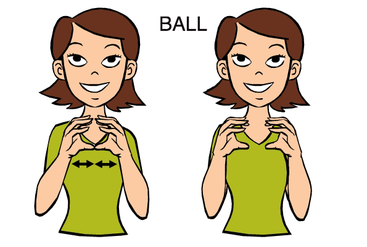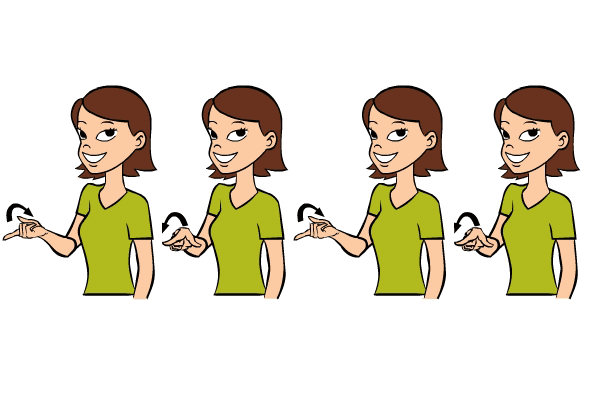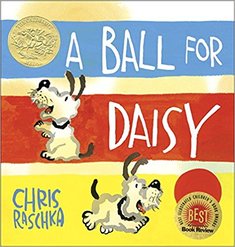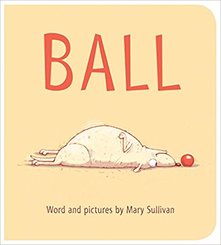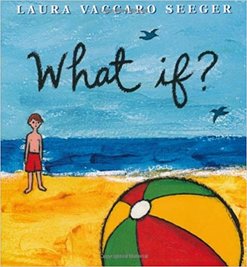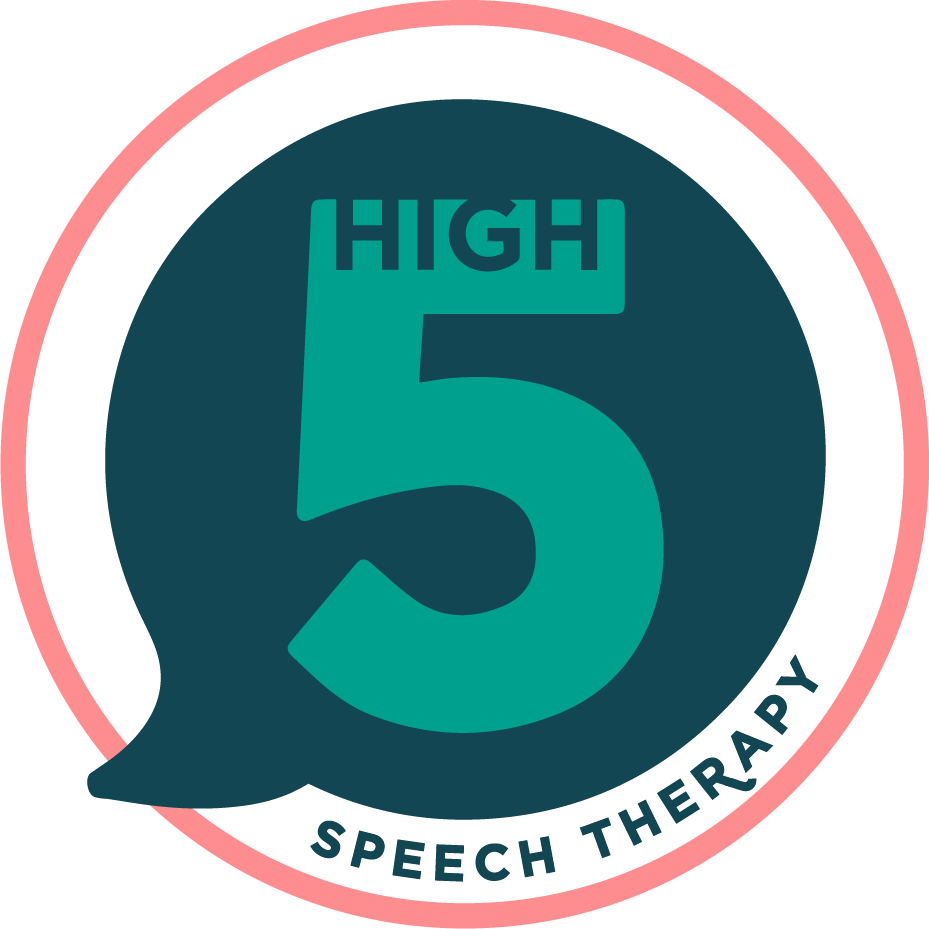Fun foundations class: Balls + rolling
Sept 13 + 18, 2017
Why practice BALL?
Why practice the word and concept ROLL?
I like to teach rolling rather than throwing (throwing comes!) because:
- BALL is often a first word, because:
- "b" is often a first sound AND
- “ah” is a neutral vowel, making it easier to produce (think of the vowel sound in "mama", "dada")
- So - it’s a great word to work on to stimulating vocabulary growth!
- It's also very easy to model because it is visibly produced on the lips (the "m" and "p" sounds are as well)
- You can help your baby attend to your mouth when you say BALL by holding a ball near your mouth and drawing his/her attention to your mouth with your index finger
- It's a great word for using expansion + extension techniques, because you can easily add verbs (roll, throw, kick, catch), prepositions (in, out, on, off, up, down, behind, under) and adjectives (colors, big/little, smooth/rough, hard/soft/squishy)
- And of course - BALLS are FUN....so they are super motivating!
Why practice the word and concept ROLL?
I like to teach rolling rather than throwing (throwing comes!) because:
- It is easier to manage
- It is less dangerous to people and things :)
- This is an AH-mazing post by an occupational therapist who writes a blog called MamaOT about how and why rolling balls is such an awesome skill, plus how to work on it with your little!
Signs we learned in class:
See the video below, or the pics/explanations under that.
See the video below, or the pics/explanations under that.
|
skills + strategies discussed in class
Expansion + Extension: These are another pair of indirect language facilitation strategies for your language-boosting toolbox. An indirect language facilitation strategy is where we build around a child's utterance (what the child says) and do NOT require a response from the child.
With expansion and extension, we are adding to or correcting a child’s phrase without interrupting the conversation flow + giving the child a model of how to make longer or more grammatically correct phrases.
With expansion and extension, we are adding to or correcting a child’s phrase without interrupting the conversation flow + giving the child a model of how to make longer or more grammatically correct phrases.
- Expansion: we keep the child's words and message the same and just expand them slightly to make the phrase a bit longer and/or more grammatically correct. Just add 1-2 words.
- Examples:
- Child: "puppy!"
- You: “there's a puppy!” or "it's a puppy!" or "I see puppy!"
- Child: "plane up!"
- You: "plane up in sky!" or "plane is up!"
- Child: "car go"
- You: "car is going" or "there goes the car"
- Child: "puppy!"
- Examples:
- Extension: we simply respond to the child's utterance in a conversational way, providing a bit of new information that is related to what the child had to say. Just add 1-2 words.
- Examples:
- Child: “puppy outside”
- You: "Puppy outside is barking" - we've responded to the child's utterance and we've stayed on the same topic (the puppy who is outside) but now we've added new information. We've extended the conversation by adding a bit more information. This is the key to extension.
- Child: "plane up!"
- You: "plane flies up!" or "big plane is up" or "plane flies up and over"
- Child: "car go"
- You: "car goes fast" or "blue car goes" or "daddy's car go"
- Child: “puppy outside”
- Examples:
- Note to parents:
- In my experience in working with parents, the hardest part about these strategies is that they require parents to wait. Often, when we are in teaching mode, we are inclined to instruct - to direct a child, to tell a child what to do or how to do it. There is most definitely a time and place for this (heaven knows I have directed many children to do many things in my career). There also need to be times, however, when we respond to a child's language instead of directing it. And that's where expansion and extension come in.
- No questions.
- I repeat: no questions. We ask a LOT of questions to children, often very rhetorical (your child is holding a ball and you ask, "is that a ball?" or "are you holding a ball?"), which often elicit only a yes/no answer at best.
- No expectation for child to imitate you
- Please do not have the expectation that your child is automatically going to repeat you. These techniques simply give your child exposure to language during play and daily routines and to model what a longer phrase would sound like.
- Research seems to indicate that many children learn language faster when their parents use more conversational language-learning strategies like expansion and extension, as compared to parents who are more directive with their children.
- Use of these techniques is also linked to longer utterances in children - in other words, children who are exposed to these types of responsive language facilitation techniques seem to use longer sentences overall.
- Anytime your child talks or points! Anything with language intention.
Songs from Balls + Rolling class
In addition to the songs below, we also did "10 in the Bed" as a movement song where we spun for the "rolling" parts and dipped baby down for the "falling" parts.
|
|
LYRICS FOR ROLL, ROLL SUGAR BABIES (lap bounce/finger play):
1. Roll roll sugar babies Roll roll sugar babies Push and Pull And clap clap clap (repeat verse) -------- Roll up high Roll down low Roll real fast Roll real slow -------- Roll roll sugar babies Roll roll sugar babies Push and Pull Clap clap clap -------- Verse 2: Substitute “up and down” for “push and pull” Verse 3: Substitute “left and right” for “push and pull” |
|
|
LYRICS FOR ROLL, ROLL, ROLL THE BALL (action song for rolling ball):
(tune of Row, Row, Row Your Boat) Roll, roll, roll the ball, Gently across the floor. Rolling, rolling, rolling, rolling, Let’s roll the ball some more. (keep repeating) Possible last verse: Roll, roll, roll the ball, Gently to your friend/mom/dad. Rolling, rolling, rolling, rolling, Now it comes to an end. |
|
|
LYRICS FOR ROLL THAT LITTLE BALL AROUND THE ROOM (action song for rolling ball):
Roll that little ball around the room Roll that little ball around the room Roll that little ball around the room Roll that little ball, roll! |
|
|
LYRICS FOR I SEE A BALL
Ball, ball, I see a ball. Blue ball, blue ball. Ball, ball, I see a ball Yellow ball, yellow ball Ball, ball, I see a ball Red ball, red ball Here we go! Let’s play. Kick the ball! Kick! Throw the ball! Throw! Catch the ball! Catch! Bounce the ball! Ball ball, I see a ball Blue ball, blue ball Ball, ball, I see a ball Yellow ball, yellow ball Ball, ball, I see a ball Great job! |
|
|
LYRICS FOR BALL COUNTING CONTEST
It’s a super, wonderful, fantastic super, wonderful, fantastic super, wonderful, fantastic Ball counting contest! (repeat 1x) Let’s work together! Red! Pick up the red balls, Put them in the basket. (repeat 2x) Now let’s count: 1, 2, 3, 4, 5 5 red balls! 5 red balls! Yay! --------------------- Verse 2: Repeat from beginning – with 6 yellow balls --------------------- Verse 3: Repeat from beginning – with 7 blue balls --------------------- 5 red balls 6 yellow balls 7 blue balls The blue balls are the winners! Yay! Repeat first part 2 more times |
BOokS to practice BALLs/rolling
|
The book we read in class was A Ball for Daisy, a Caldecott-medal winning book by Chris Raschka. It is a wordless book, which I LOVE!
Here's a few reasons why I love wordless books:
|
|
Another GREAT wordless book for talking about balls is Ball by Mary Sullivan.
|
|
Last (but not least!) - remember those "Choose Your Own Adventure" books from when we were kids? This picture book about balls and seals is a little like that - except it has a very sweet theme about being a good friend. It's called What If? by Laura Vaccaro Seeger.
|

